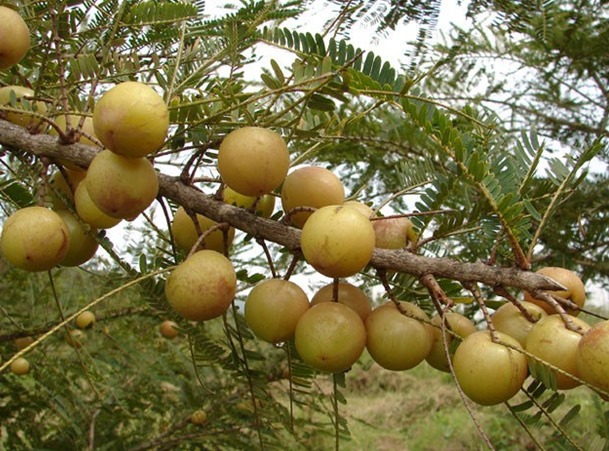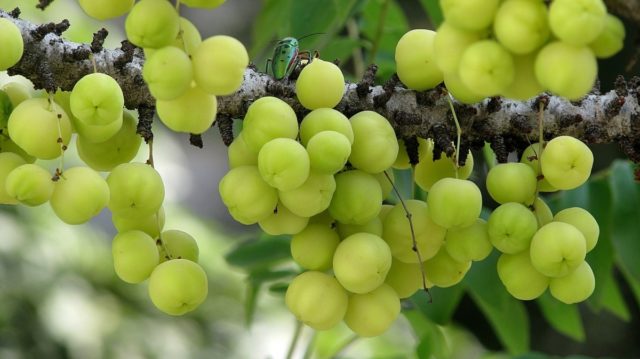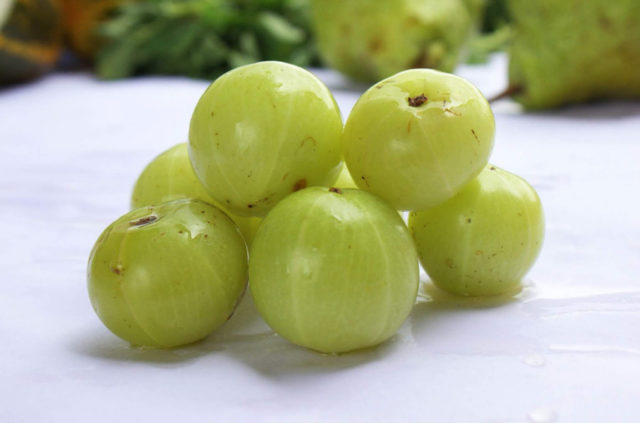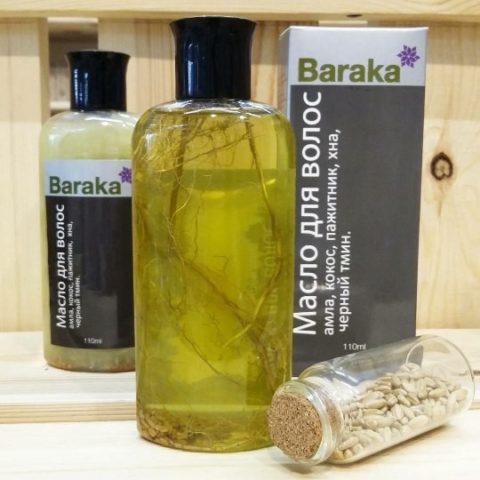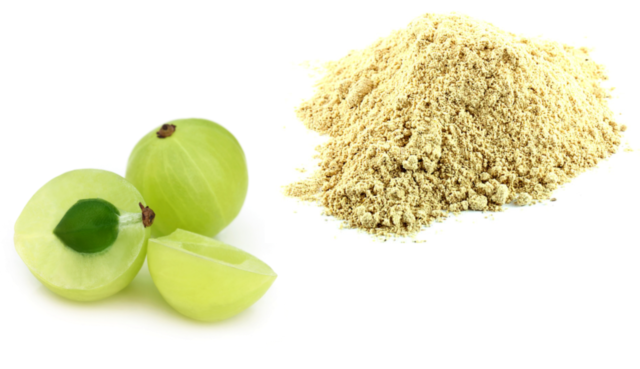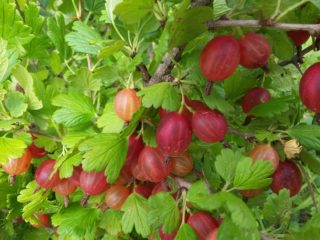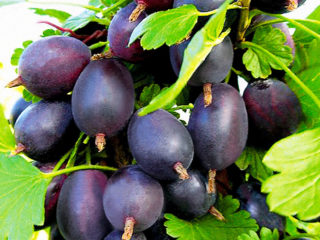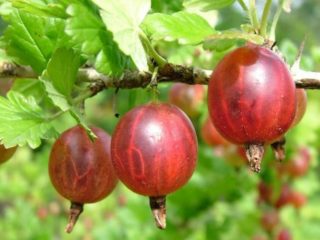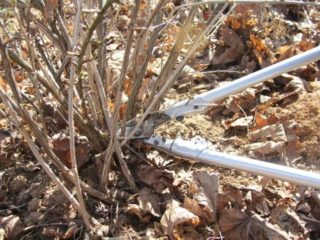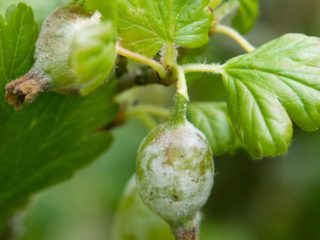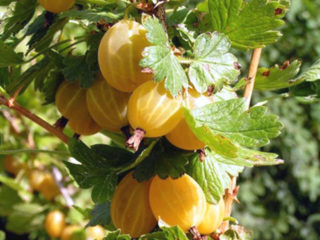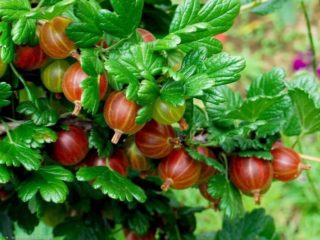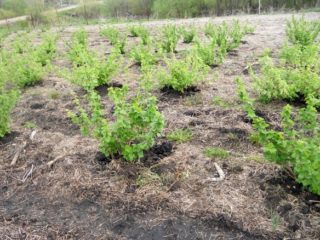Content
- 1 What is "amla"
- 2 Composition and nutritional value of Indian gooseberry
- 3 What are the medicinal properties of Indian gooseberry amla?
- 4 What are the benefits of amla for the body?
- 5 Beneficial properties of amla berries
- 6 Uses of amla berries
- 7 The use of amla oil in cosmetology
- 8 Restrictions and contraindications
- 9 Conclusion
Indian gooseberry Amla, unfortunately, is not often used for medicinal purposes in Russia. However, in the East, since ancient times it has served as a popular medicinal and cosmetic product, actively used in Ayurveda. Amla has unique properties and is an active component of many effective dietary supplements that can be found in specialty stores and pharmacies around the world.
What is "amla"
The correct name for the Indian gooseberry amla is Phyllanthus emblica. The culture belongs to the Euphorbiaceae family and is a deciduous fruit tree with a slightly curved trunk with light brown, smooth bark, reaching a height of 7 - 8 m.During leaf fall, amla branches fall along with the leaves, which resemble light feathers and have a pleasant green tint. The flowers of the tree are dim, small, light green with a yellow tint. Indian gooseberries bloom in March, after which they produce greenish-yellow, transparent and smooth round berries that resemble ordinary gooseberries in appearance. They ripen from November to February. Southeast Asia is home to the Indian amla gooseberry, which grows throughout India in deciduous forests. The tree is also cultivated in China, Thailand, and Malaysia, where its benefits are widely known.
Composition and nutritional value of Indian gooseberry
Indian gooseberry amla produces small berries weighing up to 2.5 g, which are a real storehouse of useful microelements and vitamins. The natural balance of carbohydrates and proteins makes the product easy to digest. Indian gooseberry contains:
- macro- and microelements – magnesium, calcium, phosphorus, potassium, iron, chromium;
- vitamin C;
- amino acids;
- tannins;
- riboflavin, thiamine, carotenoids, niacin and many other components that are healing for the human body.
The calorie content of the product is 54 kcal per 100 g.
What are the medicinal properties of Indian gooseberry amla?
Reviews from real people who were treated with Indian gooseberries confirm the benefits of the amla plant. After all, it has a whole range of beneficial effects on the human body:
- antioxidant;
- diuretic;
- antipyretic;
- anti-inflammatory;
- laxative;
- diuretic;
- calming;
- rejuvenating;
- antidiabetic;
- antispasmodic;
- antiglycemic.
That is why in the East in medicine since ancient times they have known about the benefits of Indian gooseberry amla and used it for treatment:
- diabetes;
- peptic ulcers;
- anemia;
- pulmonary tuberculosis;
- asthma;
- infectious respiratory diseases;
- scurvy;
- cough;
- dysentery;
- diarrhea;
- migraine;
- eye diseases - glaucoma and conjunctivitis.
The benefits of Indian gooseberries include a beneficial effect on the nervous system, improving memory, and eliminating attacks of fatigue. It is not without reason that the plant is widely used as part of remedies to improve concentration and eliminate mental agitation. In addition, Indian gooseberry amla is used for cosmetic purposes: its use for hair restoration is especially popular.
What are the benefits of amla for the body?
First of all, amla is valued for its high content of vitamin C, which, in combination with the tannin complex and gallic acid, is retained in the berries for a long time.
The plant's valuable oil is produced from its berries. At the same time, for medicinal purposes, for the preparation of medicines, not only the fruits of the Indian gooseberry are widely used, but also its other parts - roots, leaves, seeds, bark, flowers.
Regular use of amla allows you to:
- strengthen the immune system;
- cleanse yourself of toxins;
- normalize blood pressure;
- cleanse the liver;
- normalize the functioning of the gastrointestinal tract;
- slow down the aging process;
- reduce blood sugar levels;
- protect the body from the effects of toxins and free radicals.
The benefits of Indian gooseberries also include lowering cholesterol levels and a beneficial effect on the cardiovascular system, strengthening the walls of blood vessels. The beneficial properties of amla are relevant for men and women, as well as for children and the elderly.
For men
Amla is often used to treat infertility in men and eliminate potency problems. Thanks to an impressive amount of useful substances, the fruits of the medicinal tree increase blood supply to the male organs and have a beneficial effect on the reproductive system. In addition, the berries of the plant increase vitality, which has a beneficial effect on the sexual tone of the body. According to reviews from men who take products that contain amla, formulations with Indian gooseberry increase male strength, give stamina and activity. This is especially true for mature men who have all kinds of problems with sexual function. That is why Indian gooseberry amla is often found in male potency enhancing drugs.
For women
Gooseberries grown in India are invaluable for the female reproductive system, as well as for maintaining beauty. Their benefits for the fair sex are extensive and are manifested:
- in normalizing hormonal levels;
- increased blood flow to the female organs;
- correction of the entire reproductive system;
- beneficial effects on skin and hair both when consuming berries internally and when preparing masks based on them;
- improving well-being during menopause;
- enhancing metabolism, which helps women fight excess weight.
Indian berry can help women get pregnant and fully enjoy their sex life. The property of amla to increase blood supply to the genital organs can provoke a miscarriage in the last trimester or in the presence of individual contraindications, therefore, before using products containing the plant, a consultation with a specialist monitoring the progress of the pregnancy is required.
Is it possible for children to take amla?
Russian experts do not recommend giving amla gooseberries to children under 3 years of age, due to the exotic nature and unfamiliarity of the berries to the body. However, in Eastern medicine, the benefits of eating Indian gooseberries for children are considered unconditional, so Ayurveda allows even one-year-old children to consume Indian gooseberries to improve immunity and fight infectious diseases.
Beneficial properties of amla berries
The benefits of gooseberry fruits from India have been confirmed by clinical studies, which allows them to be widely used for medical purposes to combat:
- with Alzheimer's disease and mental disorders;
- the development of tumors – both benign and malignant;
- early baldness;
- infertility.
In addition, Indian gooseberry helps remove toxins from the liver associated with poisoning and consumption of fatty foods, sugar and alcohol. Therefore, the berry is often used to treat kidney diseases, in the fight against age-related genetic mutations. Amla is also useful for diseases of the teeth and gums.
More about the experience of using amla in the video:
Uses of amla berries
The fruits of Indian gooseberries are used for diabetes, eye, gastrointestinal, and cardiovascular diseases. Berries have beneficial properties to improve the body's resistance to infections, completely rejuvenate the body and enhance cellular metabolism. Amla is a very powerful natural antioxidant that helps remove toxins and improve digestion. The medicinal plant is used both in the form of fresh berries and their juice, and in the form of dry powder.
Fresh berries
The most effective way to benefit the whole body is to eat fresh berries. It is best to take Indian gooseberry after meals or prepare an infusion based on it. To do this, the berries are poured with water at room temperature and left for 12 hours, after which the fruits are squeezed out and the liquid is used for its intended purpose. Due to the high concentration of active substances, it is recommended to dilute the infusion with water. In this form, the benefits of use are equal to consuming fresh fruits.
Juice
Freshly squeezed or canned juice of Indian gooseberries is useful in the treatment of:
- respiratory organs - for treatment, take juice in equal proportions with honey and drink 1 - 2 tbsp. l. several times a day;
- oral cavity and, in particular, for stomatitis - rinse 2 tbsp. l. amla juice, diluted in 0.5 tbsp. water;
- diabetes - drink 1 tbsp. l. juice 3 times a day;
- eyes - 2 tsp solution. juice in ½ tbsp. water, which is drunk on an empty stomach.
Use of dried fruit powder
Dried berries of the Indian gooseberry in the homeland of its growth are used to produce a powder that is exported to other countries.
- The simplest and most useful is to use the product internally. To do this, 5 g of powder is diluted in 1 tbsp. water and drink 2 times a day. Since amla has unique properties, the benefits of such a reception for the body are priceless: a tonic prepared from powder rejuvenates, restores vitality and tone.
- To cleanse the blood or cure infectious respiratory diseases, just mix the powder with honey in equal proportions.
- In case of exhaustion, to quickly gain body weight, dried gooseberries are mixed with melted butter in equal proportions and taken orally. The product increases appetite and promotes weight gain. For this property, amla is extremely valued in the East and is widely used to treat seriously ill people and patients after operations.
- An infusion of dried fruits is beneficial for the eyes. For this purpose, soak 5 g of amla powder in 1 tbsp overnight. warm water. The resulting composition is used to wash the eyes for eye diseases - conjunctivitis and glaucoma.
- To prepare the decoction, take 1 tbsp. l. raw materials and pour 1 liter of water, boil for 5 minutes. Cool the mixture and wash your face with it. The decoction has a beneficial effect on the skin, helping to make it smooth, soft, elastic, and eliminate excess shine.
The use of amla oil in cosmetology
Indian gooseberry oil is widely used in cosmetology by Eastern women. Amla is the main component of face and hair masks, which helps make the skin smooth, even, and remove signs of fatigue on the eyelids.However, amla brings the greatest benefit to hair, giving it shine, silkiness and thickness. This hair restoration product is considered one of the most useful and reliable, analogues of which are difficult to find. Amla gives hair not only a visible, cosmetic, but also a deep, medicinal effect.
Using amla oil for hair
Indian gooseberry oil is suitable for all hair types. The easiest way to nourish your hair with vitamins and beneficial microelements, restore the hair structure and make it manageable, soft, and silky is to simply lubricate your hair and scalp with the product in its pure form. After applying the oil, you need to wrap your hair with film and leave the mask on for 40 - 60 minutes. To enhance the effect, leave the product on the head for up to 6 - 7 hours. Apply more oil to dry ends. To increase the beneficial effect, Indian gooseberry ether is mixed with ingredients such as kefir, honey, sour cream and other vegetable oils.
- To prepare a honey composition that eliminates dandruff and makes hair shiny, the ingredients are mixed in equal quantities and heated slightly. Amla and honey are taken for this in equal proportions.
- To eliminate excess fat and reduce the activity of the sebaceous glands, Indian gooseberry oil is mixed with kefir in a ratio of ½ and 4 - 5 drops of lavender or tea tree ether are added.
- You can strengthen your hair with gooseberries by mixing its oil with sour cream in a 1:1 ratio and 5 drops of rosemary ether.
Is it possible to make amla oil at home?
Typically, amla oil is not produced in its pure form, but is included in products based on other esters. Therefore, a recipe for preparing a homemade high-quality oil composition based on purchased gooseberry powder from India will be useful. To do this you will need:
- Pour 10 g of powder into a clean glass jar with a screw-on lid;
- add 100 g of good quality vegetable oil (olive, sesame milk thistle, etc.);
- mix the ingredients thoroughly;
- leave for 24 hours, occasionally shaking the contents of the jar;
- strain the mixture through a coffee filter or cheesecloth;
- pour into a dark glass bottle;
- Store in a cool, dry and dark place.
Restrictions and contraindications
There are no strict contraindications to the use of medicinal raw materials of Indian gooseberry. The limitation is individual intolerance to the plant and its use by children under 3 years of age. It is worth paying attention: along with its effectiveness and benefits, the use of Indian gooseberries can also cause side effects, such as:
- strong, even critical, decrease in blood sugar levels;
- dehydration of the body;
- constipation;
- liver dysfunction;
- bleeding if you combine the drug with anticoagulants.
Conclusion
Indian gooseberry amla is an invaluable plant with wide medicinal properties.To avoid side effects, it is better to consult a specialist before using a herbal remedy; this is especially true for people suffering from chronic diseases.
